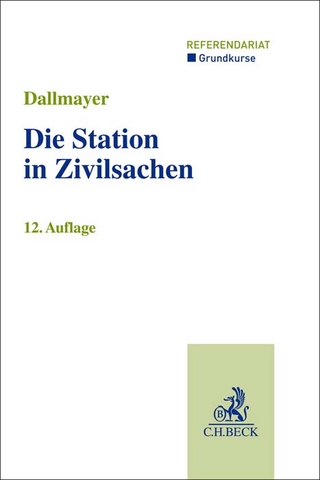
The Case for Eyewitness Identification Reform
2024
American Bar Association (Verlag)
978-1-63905-520-3 (ISBN)
American Bar Association (Verlag)
978-1-63905-520-3 (ISBN)
- Titel z.Zt. nicht lieferbar
- Versandkostenfrei
- Auch auf Rechnung
- Artikel merken
The Case for Eyewitness Identification Reform is divided into five chapters.
Chapter 1 lays out the existing eyewitness identification practice in most jurisdictions.
Chapter 2 sets forth the law governing eyewitness identification admissibility, as embodied primarily by Manson v. Brathwaite, and how juries are instructed regarding eyewitness identification evidence that is admitted at trial, as embodied primarily by Telfaire v. United States.
Chapter 3 lays out what we currently know about memory and perception, insofar as they relate to eyewitness identification.
Chapter 4 examines criticisms of Manson and Telfaire, in light of what we know about perception and memory, and outlines past attempts at reforming this body of doctrine to achieve strong deterrence and reduce the number of wrongful convictions.
Chapter 5 sets forth the system and estimator variables and makes the case for three-pronged approach to reform outlined above: i.e., barring identification evidence that is either (1) obtained by suggestive means taking into account all system variables or (2) whose probative value does not substantially outweigh its prejudice when taking into account both system and estimator variables, and further (3) instructing juries to consider both system and estimator variables, insofar as they are implicated by the evidence.
Chapter 1 lays out the existing eyewitness identification practice in most jurisdictions.
Chapter 2 sets forth the law governing eyewitness identification admissibility, as embodied primarily by Manson v. Brathwaite, and how juries are instructed regarding eyewitness identification evidence that is admitted at trial, as embodied primarily by Telfaire v. United States.
Chapter 3 lays out what we currently know about memory and perception, insofar as they relate to eyewitness identification.
Chapter 4 examines criticisms of Manson and Telfaire, in light of what we know about perception and memory, and outlines past attempts at reforming this body of doctrine to achieve strong deterrence and reduce the number of wrongful convictions.
Chapter 5 sets forth the system and estimator variables and makes the case for three-pronged approach to reform outlined above: i.e., barring identification evidence that is either (1) obtained by suggestive means taking into account all system variables or (2) whose probative value does not substantially outweigh its prejudice when taking into account both system and estimator variables, and further (3) instructing juries to consider both system and estimator variables, insofar as they are implicated by the evidence.
Introduction: (Why) Do Eyewitness Identifications Still Matter?
Chapter 1: Police Identification Procedures
Chapter 2: Admissibility of Eyewitness Identification
Chapter 3: Jury Instructions
Chapter 4: Experts
Chapter 6: On the Validity of System and Estimator Variables
Chapter 7: Reform Possibilities
Epilogue: On the Importance of Persistence and Vigilance
Index
| Erscheinungsdatum | 15.10.2024 |
|---|---|
| Zusatzinfo | Illustrations |
| Verlagsort | Chicago, IL |
| Sprache | englisch |
| Maße | 152 x 228 mm |
| Themenwelt | Recht / Steuern ► EU / Internationales Recht |
| Recht / Steuern ► Privatrecht / Bürgerliches Recht ► Zivilverfahrensrecht | |
| Recht / Steuern ► Strafrecht ► Strafverfahrensrecht | |
| ISBN-10 | 1-63905-520-7 / 1639055207 |
| ISBN-13 | 978-1-63905-520-3 / 9781639055203 |
| Zustand | Neuware |
| Haben Sie eine Frage zum Produkt? |
Mehr entdecken
aus dem Bereich
aus dem Bereich
mit Allgemeinem Gleichbehandlungsgesetz, Produkthaftungsgesetz, …
Buch | Softcover (2024)
dtv Verlagsgesellschaft
CHF 12,45
Grundkurs für Rechtsreferendare
Buch | Softcover (2023)
C.H.Beck (Verlag)
CHF 55,70


